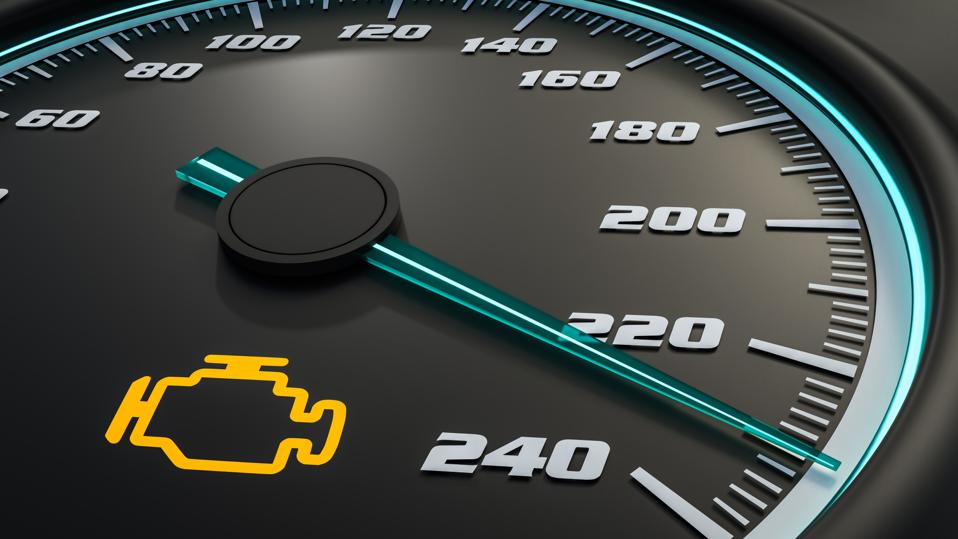Today’s cars and trucks are literally rolling test beds of technology, which has tended to make the days of the so-called shade tree mechanic and eyeball diagnoses of what ails a given model a distant memory. Fortunately, most vehicles on the road have the means to alert the driver when there’s something wrong.
This is via an important warning light that either looks like a car’s engine or spells out “Check Engine” that stays illuminated on the instrument panel after the vehicle is started. It usually indicates there’s a problem, most often with its emissions system, though it could mean there’s a more serious problem lurking under the hood. Fortunately, it’s relatively easy to diagnose the problem, as a technician can simply plug an electronic OBD (onboard diagnostics) scanner into the port to determine what’s wrong. Many auto parts stores offer this a free service, though usually with far less sophisticated equipment.
Unfortunately, many motorists simply choose to ignore an active check engine light, especially if the vehicle isn’t exhibiting any specific mechanical issues. Still, experts urge motorists to have the underlying problem resolved in a timely manner, both to maintain the vehicle’s fuel economy, but to prevent what could blossom into a much costlier repair needed down the road.
According to CarMD’s just-issued annual Vehicle Health Index, this year’s most prevalent check engine repair – replacing a catalytic converter – will now cost an average owner $1,348, which includes parts and labor. The least costly fix on the list is a loose, damaged or missing gas cap, which can cost an average $28 to replace (zero to tighten), and is one of the few easy automotive D-I-Y repairs remaining. We’re presenting the website’s list of the most common check engine problems, symptoms and their average costs to rectify below.
Car MD also reports that a auto-repair labor charges are on the upswing in three of the four U.S. regions, largely because the repairs themselves are becoming more complex and time-consuming to execute. And while parts costs dropped by an average of 5% over the past year, most are imported from other countries, especially China. That means there’s a likely chance they’ll skyrocket in the months ahead depending on when, how and if President Trump’s trade tariffs take hold.
“The check engine light is designed to come on when a vehicle’s on-board diagnostic system sees a problem that impacts emissions or drivetrain issues,” said David Rich, CarMD technical vice president David Rich. “With uncertainty about how tariffs will impact replacement part prices, it’s particularly important for drivers to address their car’s dashboard warning lights. Catching problems early can reduce the likelihood of a snowball effect from additional repairs.”
Additionally, the study confirms what would seem obvious to anyone who’s had to drive an old “beater,” namely that a burgeoning fleet of older vehicles (now up to an average 12.6 years old) are succumbing to costlier and more severe check engine maladies than newer cars. For example, CarMD reports that this year’s most common check engine repair – replacing a catalytic converter – is a fix that’s usually relegated to older cars.
The Fine Print: CarMD’s annual Vehicle Health Index is based on an analysis of over 31 million failures and recommended fixes for check engine-light issues over the past calendar year. This data is gleaned from each vehicle’s onboard diagnostic systems codes, as validated by the website’s network of technicians.
The 10 Most Common ‘Check Engine’ Problems And What They’ll Cost To Fix:
Problems are noted along with their identifying symptoms and national average parts and repair costs; charges will vary due to local parts costs/availability for specific models and prevailing wages for auto mechanics:
- Replace Catalytic Converter: Symptoms include reduced acceleration, sluggish performance, dark exhaust smoke and excess engine heat; $1,348 average repair cost.
- Replace Oxygen Sensor: Symptoms include poor fuel economy; $254 average repair cost.
- Replace Ignition Coil And Spark Plug(s): Symptoms include slow acceleration, loss of power, poor fuel economy, misfires, difficulty starting; $400 average repair cost.
- Replace Mass Air Flow Sensor: Symptoms include stalling, hesitation during acceleration, poor fuel economy; $323 average repair cost.
- Replace Evaporative Emissions (EVAP) Purge Control Valve: Symptoms include rough idling, poor fuel economy; $144 average repair cost.
- Replace Ignition Coils: Symptoms include rough idling, difficulty starting, could eventually affect other components, including the catalytic converter; $218 average repair cost.
- Tighten Or Replace Fuel Cap: Symptoms include poor fuel economy; $0-$28 average repair cost.
- Replace Fuel Injector(s): Symptoms include poor idling, engine misfires, poor fuel economy; $464 average repair cost.
- Replace Thermostat: Symptoms include engine overheating; average repair cost $254.
- Powertrain Control Module: Required when replaced or if adaptations necessary to accommodate new parts; $108 average repair cost.
Source: CarMD.com. The full report can be found here.

